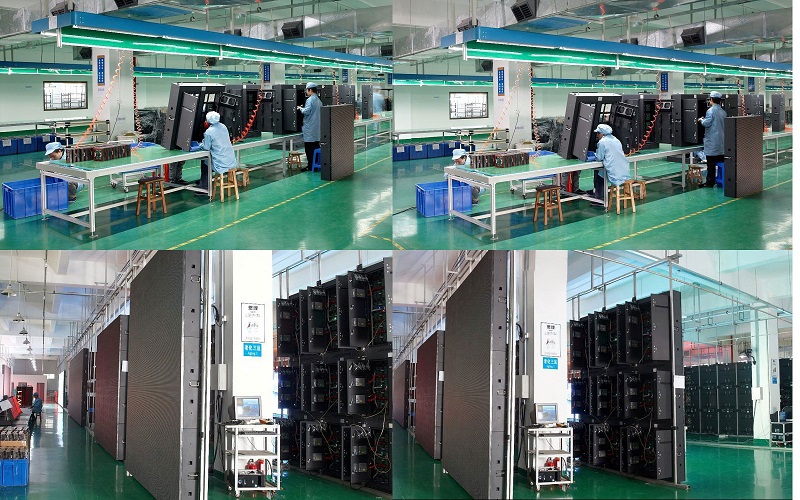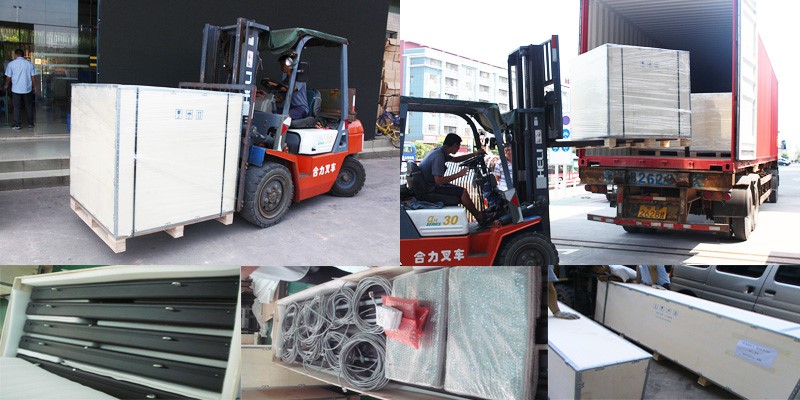CUSTOM SUPPORT & SALE
CUSTOM SUPPORT & SALE
For LED displays, the LED display encapsulation takes up 30%-70% of the total cost, and the quality of the encapsulation directly closes the quality of the LED display. For a long time, the advancement of LED display device encapsulation technology has promoted the development of led display screens; and with the development of LED display screens towards high-definition displays, the requirements for the technology and processes of LED display device encapsulation have become higher and higher. The current LED display industry is mainly based on surface-mount encapsulations. Simultaneously, in-line encapsulations and COB encapsulations coexist, but since last year, COB technology has gradually received attention from display manufacturers, while Mini LED and Micro LED technologies have also been widely used. and. In the face of this new trend, how will our LED encapsulation companies respond? The future of LED display device encapsulation will eventually go to where these have become the concern of the current business.
LED display device encapsulation technology development process
To understand the current status of LED encapsulation industry development and future trends, we must first review the history of China's encapsulation industry development. China's LED industry probably emerged in the 1980s. The development of LED display encapsulation devices mainly went through several stages: dot matrix module, in-line (lamp), sub-surface, and surface-mount (SMD). Today, dot matrix modules and sub-surface mount encapsulations have been eliminated from the market. In-line encapsulations are still used in large-pitch outdoor markets above P10, while others are superseded by surface mount devices. With the continuous development of the small-pitch LED display market, more display companies are turning their attention to the COB encapsulation. At the same time, with the advent of the new generation of display technology Micro LED, which is seen as potentially disrupting the industry, Micro LED encapsulation technology has also been widely discussed in the industry. Let us take a look at the respective technical characteristics of these types of encapsulation.
1, in-line (lamp) encapsulation
As the in-line encapsulation following the dot matrix module, the technical principle is to use a lead frame as a pin of various encapsulation shapes. Usually, one end of the bracket has a “cup-shaped” structure to stick and fix the LED chip in the “ In the cup-shaped structure, the liquid epoxy resin is injected into the cavity of the LED mold, then the pressure-welded lead-type LED bracket is inserted, the epoxy resin is cured by the high-temperature grilling, and finally the mold is released. forming.
The in-line type can be said to be the first LED product that has been successfully developed and put on the market in a large number, with various types and mature technologies. The manufacturing process is simple and the cost is low. Therefore, the inline encapsulation has a very high market share before SMD appears. In-line LED encapsulation products are mainly used for outdoor large screens, with high brightness, high reliability, and strong environmental adaptability.
At present, due to the fact that the distance between outdoor spots is also increasing towards the high density, in-line insertion is limited by the insertion of three components of red, green, and blue, which cannot achieve high density. Therefore, outdoor spot pitch P10 is gradually replaced by surface-mounted LED devices. It is generally believed that the outdoor in-line LED display screen is based on P10, but there are also LED display products in the industry that are used for P9 display.
2. Surface Mount (SMD) encapsulation
Surface Mount (SMD) encapsulation is to solder single or multiple LED chips onto a metal bracket with a plastic “cup” frame (Pole and pin of the LED chip are connected to the outside of the bracket respectively), and then to the plastic frame. The liquid epoxy or silicone is encapsulated, then baked at high temperature, and finally cut into individual surface-mount encapsulations. Due to the surface mount technology (SMT), it is highly automated. The use of surface mount encapsulation device display, in the color reproduction, color consistency, uniformity, viewing angle, the overall effect of the screen, especially in terms of volume, all have the advantage of in-line display can not be compared. However, SMDLEDs are also congenitally deficient, with high failure rate and decay rate, and relatively poor adaptability to harsh environments.
At present, SMD LEDs are mainly classified into TOP LED and Chip LED. The former often uses a PLCC (Plastic Leaded Chip Carrier) bracket, which uses a PCB circuit board as a carrier for LED chips. The cost of the PLCC support is low, but there are problems such as poor air tightness, poor heat dissipation, uneven light emission, and decreased luminous efficiency in applications. Although there are also PCT and EMC holders with better performance and light efficiency, they are expensive and costly and are not widely used in the industry.
3, COB encapsulation
A COB (chip on board) encapsulation is a method for attaching a bare chip to an interconnect substantially with conductive or non-conductive adhesive, and then performing wire bonding to achieve its electrical connection. The COB encapsulation is a stand-less technology without the stand's solder PIN pin. Each lamp bead and solder wire is tightly encapsulated in epoxy by colloidal epoxy without any exposed elements.
Compared to SMD-encapsulationd displays, the COB display uses integrated encapsulation technology. This eliminates the need for a single LED device encapsulation and then the SMT encapsulation process, which can effectively solve the SMD encapsulation display, due to the ever-decreasing point spacing. The difficulty of the process is increased, the yield is low, and the cost increases. However, COB encapsulation has not been widely used in the display industry since COB encapsulation integrates upstream chip technology, midstream encapsulation technology and downstream display technology. To realize the large-scale application of COB encapsulation, it needs the close cooperation of upper, middle, and downstream enterprises to complete.
4, Micro LED encapsulation
The full name of the Micro LED is "Micro Light Emitting Diode," and Chinese is also called a micro light emitting diode. It can also be written as "μLED."
Micro LED's thinning, miniaturization and arraying of its LED structure make its volume about 1% of the size of mainstream LED. Each pixel can be addressed and driven individually, reducing pixel pitch from millimeter to micron Thus the theory reaches 1500 ppi and even 2000 ppi ultra high resolution.
Micro LED inherits the advantages of low power consumption, high brightness, ultra-high resolution, color saturation, fast response speed, ultra-power saving, long life, and high efficiency. Its power consumption is about 10% of LCD, OLED 50%. Therefore, MicroLED is seen as a new generation of display technology that may disrupt the industry. The
Current Problems of LED Display Device encapsulation Technology in China
The development of LED displays has experienced the rapid development of single-color, full-color displays, and small-pitch HD displays. Nowadays, 2K has become popular, 4K&HDR technology has risen, and ultra-high-definition 8K has also been proposed. As people continue to pursue the display effect, LED display companies are constantly carrying out technological improvements. However, people's pursuit of high-definition picture quality is endless, and the development of a technology may face the ceiling and face the problem of replacement of old and new technologies.
For SMD small-pitch LED display screens, we have to mention that it is the appearance of SMD's small pitch that allows LED display screens to enter the room from the home screen area, thus opening up a vast commercial display market. In the professional indoor large-screen display area, there are mainly DLP rear-projection splicing, LCD splicing and other technologies, each of which has its own advantages and disadvantages. With the advantages of seamless splicing, low-light and high-gray, the small-pitch LED display has rapidly gained market recognition and has been advancing rapidly, gradually replacing some of the markets that originally belonged to DLP and LCD. SMD's small gaps are now widely used in high-end applications such as command rooms, control rooms, and conference rooms.
SMD small-pitch LED display greatly expands the application space of LED display. In order to meet the development trend of high-definition display, many companies now focus on the continuous improvement of the small pitch, and some manufacturers have introduced a 0.7 mm pitch. The display products, but limited by the process and cost, this very small pitch display product has not been applied in the market.
It is also due to SMD's small spacing in the technical process and manufacturing costs will soon reach the limit, so some of the industry's display companies have turned their attention to the COB display.
Above, we have already mentioned some technical principles about COB encapsulation. Compared with SMD encapsulation, COB is easier to achieve a small pitch, but COB is unable to solve the problems due to its uneven ink, poor consistency, and low yield once. Large-scale mass production has occupied a relatively small market share in recent years. However, in 2017, the sales of COB small-pitch displays increased by more than 200%, which was nearly 4 times that of the entire small-pitch LED market. Therefore, some people in the industry think that the COB small-pitch display is about to usher in a period of rapid development, and COB is expected to reach 2018. Small pitch display products will grow by more than 15%.
Contact us to learn more about LED display Screen now.
Why Choose Colorlight LED To Be Your Partner ? 12 Years Experience on Led Display Screen Manufacturing. Excellent after-sale service to meet your standards of excellence. 3 Years High Quality Warranty provided. 5% Spare Parts for Your Order Replacement. Convenient online Store (www.ledinthebox.com) for you to order LED display parts with best Price and fast DHL shipping. High Quality With Global Standards,CE EMC-B,RoHs,FCC,UL Certificated.


Contact: Lee
Phone: +86-132-6566-7728
E-mail: info@colorlitled.com
Add: Tangtou Industrial Park,Shiyan,Baoan,Shenzhen